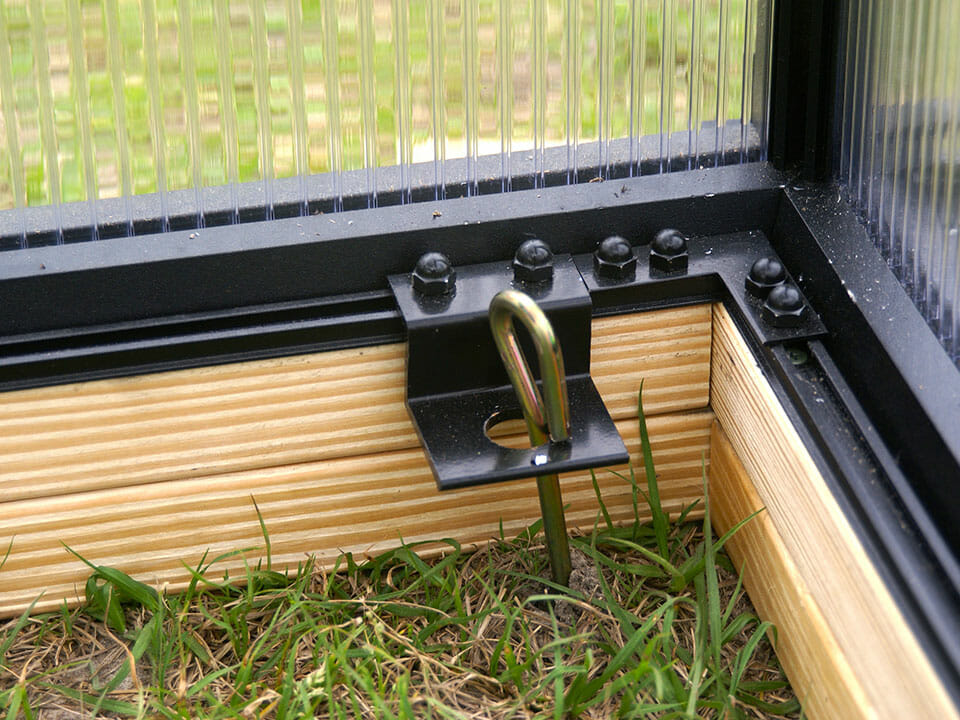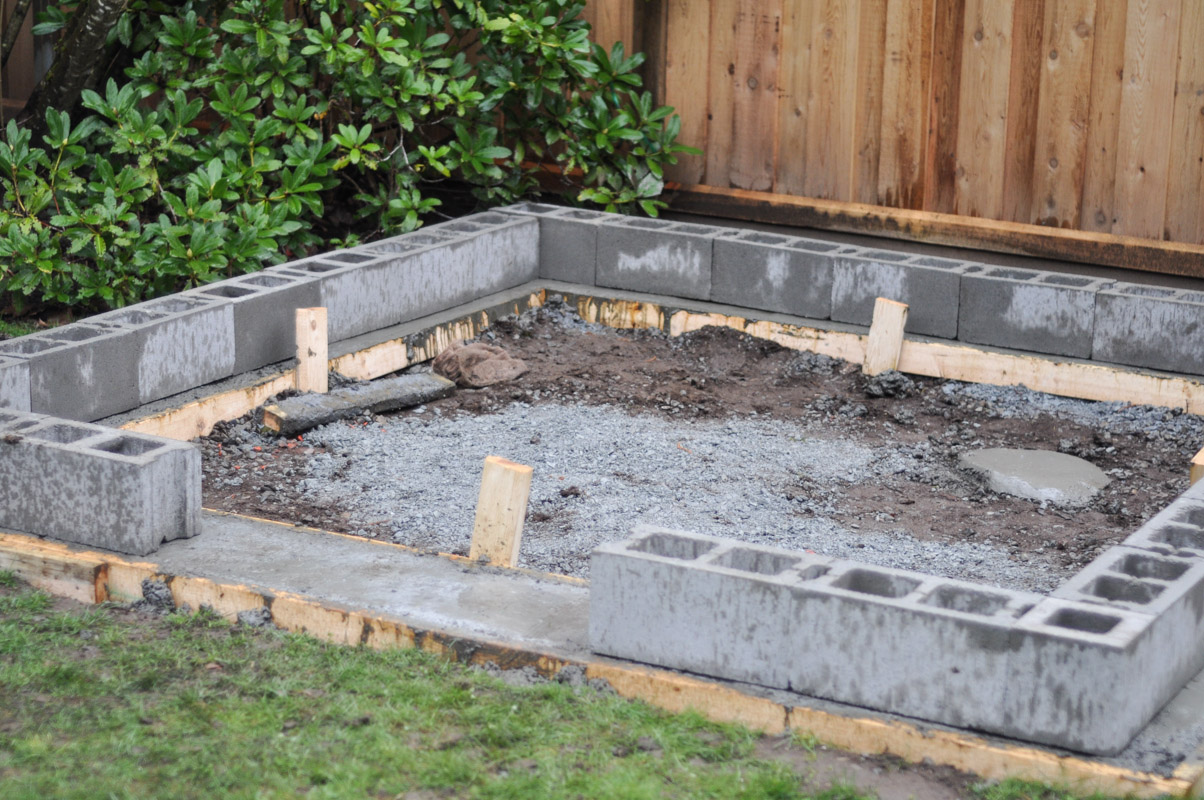Call us at 725-239-9966!
M-F: 8 AM-7 PM PST
Call us at 725-239-9966!
M-F: 8 AM-7 PM PST

Anchoring a greenhouse properly is crucial to ensure it can withstand wind, snow, and other forces of nature. A greenhouse that shifts or blows over in a storm can cause damage and be dangerous. Proper anchoring requires securing both the foundation and framework at connection points.
In this comprehensive guide, we will walk through all the important steps and best practices for securely anchoring your greenhouse kit to withstand wind and keep your plants protected.

The first step in anchoring your greenhouse is choosing the optimal location. Pick a spot with:
Good drainage - Avoid low-lying areas that can flood. Look for a slightly sloped or elevated site.
Full sun exposure - Most plants need at least 6 hours of direct sunlight daily.
Protection from wind - Position the greenhouse away from open areas that get heavy winds. Use buildings or trees as windbreaks if possible.
Accessible utilities - Consider proximity to power and water sources for convenience.
Clear area - Remove all vegetation and debris from the spot before building.
A proper foundation is crucial for keeping your greenhouse anchored against heavy winds. There are several options:
Concrete footings that extend below the frost line offer the most secure base for anchoring a greenhouse:
Dig trenches 12-18 inches wide and 6-12 inches below the frost line around the perimeter where base plates will sit. The frost line depth varies; check with local building codes.
Pour 4-6 inches of reinforced concrete into the trenches. Use rebar or wire mesh for added strength.
Insert anchor bolts every 4-6 feet around the perimeter before the concrete fully cures.
Allow the concrete to cure for 5-7 days before building.
A gravel foundation can also be effective:
Dig a 12-inch deep perimeter trench.
Fill with 4-6 inches of crushed stone like gravel, pea gravel, or sand.
Compact it down firmly before building.
This allows for drainage while still offering stability.
A wooden platform on blocks or posts can also work:
Secure 4x4 posts 2-3 feet into the ground around the perimeter. Space every 4-6 feet.
Attach 2x6 or 2x8 beams around the posts to frame a platform.
Cover with exterior plywood sheathing.
This method provides good drainage and allows securing the structure directly to the wood platform.
Once the foundation is prepared, it's time to erect and anchor the frame:
Carefully follow the greenhouse kit instructions for proper assembly. Build on a calm day.
Bolt the corner posts through pre-drilled holes into the concrete footings or wood platform.
Attach horizontal base plates to the bottom of each wall frame before standing them up.
Anchor the base plates into the foundation using concrete anchors, lag bolts, or wood screws, spaced every 2-3 feet.
Add diagonal cross bracing on all sides for added wind resistance.
Use the provided ratchet tie-down straps to connect from the frame to the foundation anchors while assembling to keep everything square.
Double-check all anchor points and tighten hardware securely once assembled.
Installing cables adds critical extra reinforcement:
Embed heavy-duty earth anchor screws 2-3 feet deep into the ground about 4 feet out from each corner.
Attach galvanized steel cables from each corner of the frame down to the earth anchors.
Use turnbuckles to keep tension tight on the cables.
Consider adding mid-span cables along each sidewall for extra support on larger greenhouses.
Cables keep the structure pulled tight to the ground from all sides.
With the frame rock-solid, it's time to add the greenhouse covering:
Roll out any provided greenhouse poly film and attach it securely to the frame following the kit instructions.
Consider upgrading to polycarbonate panels for maximum impact resistance. Polycarbonate and other rigid panel materials provide excellent wind resistance compared to poly film coverings:
| Covering Material | Wind Resistance |
|---|---|
| 6 mil Poly Film | Moderate |
| 8 mil Poly Film | Better |
| 10 mil Poly Film | Good |
| Polycarbonate | Excellent |
| Acrylic | Very Good |
Seal the edges of coverings with closure strips and use greenhouse caulk anywhere coverings meet the frame.
Install any vents, louvers, or exhaust fans and seal them fully.
Properly sealing the covering keeps the interior protected from winds seeking any way to penetrate inside..
Before growing in your greenhouse, do a final check:
Tighten all bolts, screws, cables, and cover fasteners to confirm everything is fully protected with no loose hardware.
Inspect for any gaps or unsealed areas and apply caulk or tape as needed to protect from wind intrusion.
Consider adding interior strapping or storm panels for extra reinforcement in intense wind regions.
Take time to carefully anchor and seal your greenhouse and it will stand strong through extreme weather for many growing seasons!

Beyond the main methods above, there are a few other techniques that can help stabilize a greenhouse:
Bury segments of galvanized pipe 2 feet deep around the perimeter to insert earth anchor cables into for maximum holding strength.
Create a brick or cinder block foundation around the borders to anchor base plates into.
Pour a full 4-6 inch concrete slab as the floor and embed anchors before it cures.
Attach wood or metal skirting around the base to create a stronger lower barrier against wind.
Consider your specific site conditions and greenhouse size to choose the right anchoring solution.
Follow these best practices to properly protect the greenhouse:
Bolt greenhouse frames directly into concrete footings or wood platforms.
Use anchor cables tensioned into the earth at each corner.
Seal all covering edges fully with closures and caulk.
Choose polycarbonate panels over poly film coverings.
Install diagonal cross bracing on all frame walls.
Check for loose hardware and gaps allowing airflow after storms.
Consider a gravel perimeter foundation for drainage.
Embed anchor pipes or rebar in concrete for cable stability.
Proper anchoring and sealing techniques will keep your greenhouse protecting your precious plants!

With the right location, foundation, anchors, and sealed covering, your greenhouse has the best chance of surviving whatever wind and weather comes its way. Follow the techniques outlined to keep plants safeguarded and your greenhouse investment safely in place for the long term.
Using anchor cables and turnbuckles connected from the corners of the greenhouse frame down to earth anchors screwed into the ground around the borders is the best way to keep the structure pulled tight greenhouse to the ground.
Adding diagonal interior bracing, securing base plates into the foundation, and installing mid-span reinforcement cables along the sidewalls will significantly strengthen the greenhouse structure. Checking for loose hardware and sealing any gaps after storms is also crucial.
Assess the location for proper sun exposure, wind protection, drainage, and utility access. Prepare the foundation well by anchoring it into concrete footings or a crushed stone/wood platform. Assemble on a calm day and use ratchet straps to keep it square.
Plastic poly film can work but upgrading to rigid polycarbonate panels that bolt into the frame provides maximum impact resistance and strength for your greenhouse covering. Carefully sealing the edges with closures and caulk is also key to securing the greenhouse.
Creating a perimeter foundation of crushed stone or a wood platform on secured posts will provide a flat, level surface for assembling the greenhouse base plates and frame. Checking for level frequently while building is also important.

{"one"=>"Select 2 or 3 items to compare", "other"=>"{{ count }} of 3 items selected"}
Leave a comment